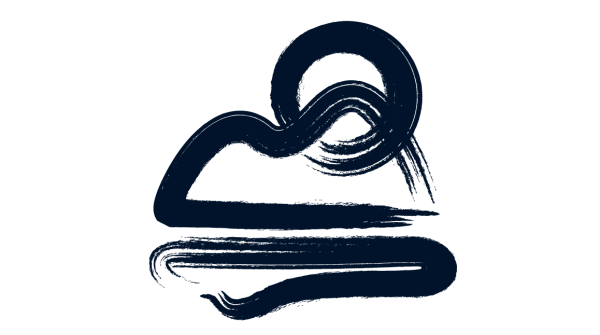It is certainly true to a large extent that the outdoor industry is a pioneer when it comes to sustainability. There is a consensus that circular supply chains could be the solution to many problems. But how do we actually achieve Net Zero? What are the really important next steps?
Sorry to say: it won't work without hard facts and figures. Monitoring is the topic of the hour. How unfun, isn't it? Fortunately, some industry experts have already developed really good methods and technologies to measure the environmental impact of circular supply chains. At OutDoor 2024, there were not only motivating impulses, but also monitoring tools that you can use to get started right away.
"You have to play detective and collect as much data as possible," says Bowie Willis at OutDoor 2024. The textile designer has trained as an expert in LCAs in order to better understand the environmental impact of a product's life cycle and to make visible which adjustments can be made to reduce emissions.
This requires perseverance, but is definitely worth it, says Willis. LCAs are the best tool for becoming proactive: Identifying hotspots in a product's life cycle and then taking action.
The life cycle of a product includes
- Raw material
- manufacturing
- transportation
- use
- Possible recycling
- Disposal
Let's start at the beginning. There are an infinite number of data gaps to fill in the supply chain. Who knows exactly what fuel the yarn manufacturer's dye supplier is using? And in which vehicle at all?
Because Ortovox wants to know exactly, a team developed its own supply chain monitoring concept within a year as part of the ProtACT Academy. All those involved in the supply chain are asked to provide information once a year by means of a questionnaire. The evaluation is based on certificates such as OEKO TEX, Higg FSLM verified or bluesign. Classification into one of the three categories that are eligible for cooperation at Ortovox is also based on social factors such as working conditions, working hours and wages.
"The complete supply chain information enables much better documentation and therefore significantly better risk management. Our supply chains are transparent and the workload is reduced," reports Chemical Manager Anna Mack's team. The monitoring tool is accessible to everyone and is free to use. There will be a ProtACT Academy webinar on July 4, 2024 via European Outdoor Group.
As useful as it is to have complete information about the supply chain, it has been shown that the critical phases of a product are its use and end of life, reports Bowie Willis. Recycling is unavoidable if something is to be done better here.
Martha Willis from the textile recycling project presented concrete learnings and results at OutDoor 2024 Accelerating Circularity. The non-profit company has recycled 72 tons of textiles from the EU and the USA in recent years. The result was 27.5 tons of recycled cotton and recycled polyester.
The preparation was particularly challenging, Martha explains in the presentation. Analyzing and sorting the textiles were the biggest time wasters in the process. The logistics in the EU are also complicated and need to be planned well and in good time. She also reports that she had to do a lot of persuading because recycling is still stigmatized in the industry. Anyone who still needs arguments against this will find the free playbook from Accelerating Circularity is a step-by-step guide to getting started with a circular business model.
"I hope that we become just as precise in monitoring our material circularity as we are in monitoring our finances," says David Quass from the VF Cooperation. He has been dedicated to sustainable transformation for years and, above all, to the question: how can it be tracked?
An important tool for this are the Circular Transition Indicators open source KPIs from the WBCSD for circular systems in the textile industry. In the VF Cooperation, they are applied to the sports and outdoor sector to advise companies such as The North Face, Eastpak, Vans and Napapijri. North Face Renewed or the Eastpak slogan "Built to last" are the results of these synergies.
Quass compares the process to the Tower of Babel: "Everyone has to speak the same language, have the same level of knowledge and have the same goal in mind so that we can actually achieve Net Zero. In the supply chain, in production, in design, in use and also in the recycling of our products.
In the Speakers Corner at OutDoor 2024, Bowie Willis wanted to break down fears of monitoring tools at all costs. She spoke from her own experience when she talked about the aversion to long Excel lists. But there is no way around it: "We only grow if we learn." In the end, everyone has to learn how to deal with the data, she says in her panel talk.
Her suggestion to work with content rather than finished products when analyzing was particularly plausible. Similar to baking: What can be made from flour, butter, sugar and eggs! Even small changes in the quantity or processing of the ingredients lead to completely different results. All you need to succeed is good basic information: Very precise data, right from the start of each life cycle of our products.
- Awards
- Mountain sports
- Bike
- Fitness
- Health
- ISPO Munich
- Running
- Brands
- Sustainability
- Olympia
- OutDoor
- Promotion
- Sports Business
- Textrends
- Triathlon
- Water sports
- Winter sports
- eSports
- SportsTech
- OutDoor by ISPO
- Heroes
- Transformation
- Sport Fashion
- Urban Culture
- Challenges of a CEO
- Trade fairs
- Sports
- Find the Balance
- Product reviews
- Newsletter exclusive area
- Magazine









